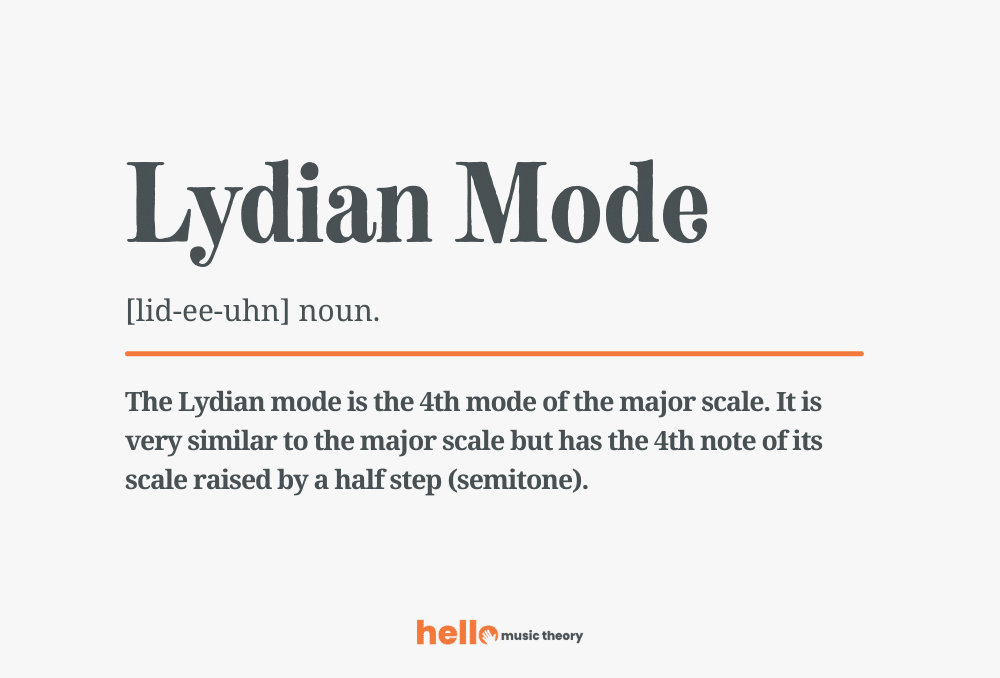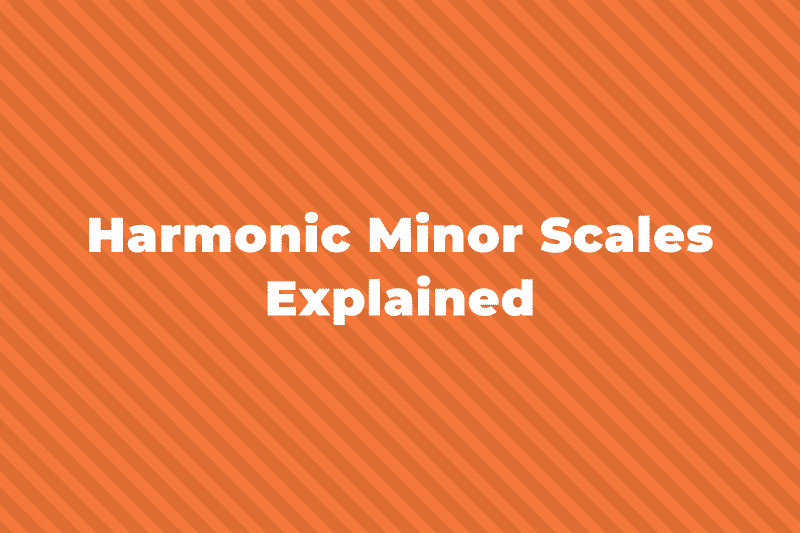Of all the modes of the major scale, there is one type that has an augmented interval in it called the Lydian mode.
In this post, I’m going to go into everything you need to know about the Lydian scale, but before we do that, let’s recap what exactly modes are.
What are Modal Scales?
The modal scales, or modes, as they’re more commonly known, are a series of seven diatonic scales.
Each of them has its own distinct sound, but they all have five tones (whole steps) and two semitones (half step) intervals.
Each mode is made by playing all the notes from a major scale but starting on a different degree.
For example, if you were to play the notes of F major but starting on G you would be playing G Dorian mode.
Or if you were to play all the notes of F major but starting on D you would be playing D aeolian mode.
| Modal scales | Notes of the mode |
| C Ionian mode | C – D – E – F – G – A – B |
| D Dorian mode | D – E – F – G – A – B – C |
| E Phrygian mode | E – F – G – A – B – C – D |
| F Lydian mode | F – G – A – B – C – D – E |
| G Mixolydian mode | G – A – B – C – D – E – F |
| A Aeolian mode | A – B – C – D – E – F – G |
| B Locrian mode | B – C – D – E – F – G – A |
What is the Lydian Mode?

The Lydian mode is the 4th mode of the major scale. It’s named after the region of Lydia next to what was Ancient Greece over 3000 years ago.
It is very similar to the Ionian mode (the major scale) but has the 4th note of its scale raised by a semitone (half step), giving it a very bright sound.
Here is an F Lydian scale.

The Lydian mode uses the formula of semitones and tones: T – T – T – S – T – T – S
Which in half and whole steps is: W – W – W – H – W – W – H
Degrees of the Lydian Scale
Like we covered earlier the Lydian scale is almost the same as the major scale except it has a raised 4th (by a semitone) which is an augmented 4th.
All the other degrees of the scale are major intervals.
- 1. Root
- 2. Major second
- 3. Major third
- #4. Augmented fourth
- 5. Perfect fifth
- 6. Major sixth
- 7. Major seventh

Because the first four notes are intervals of a tone apart it sounds quite similar to the whole tone scale (which is made up entirely of tones).
Music Written in the Lydian mode
The Lydian mode is used a lot in popular music, and I’m almost certain you’ve heard it before, maybe without realizing it.
Probably one of the most recognizable pieces of music that uses the Lydian mode is the theme tune to The Simpsons.
Another piece that uses the Lydian mode from the classical repertoire is the third movement from Beethoven’s String Quartet No. 15 in A Minor, Op. 132.
It’s written in F Lydian, and I think you’ll agree it sounds quite ethereal.
List of Lydian modes
Below are all the notes of the Lydian scale in all keys.
| Key | Notes in the Lydian mode |
| C | C – D – E – F# – G – A – B – C |
| C# | C# – D# – E# – F## – G# – A# – B# – C# |
| Db | Db – Eb – F – G – Ab – Bb – C – Db |
| D | D – E – F# – G# – A – B – C# – D |
| D# | D# – E# – F## – G# – A# – B# – C## – D# |
| Eb | Eb – F – G – A – Bb – C – D – Eb |
| E | E – F# – G# – A# – B – C# – D# – E |
| F | F – G – A – B – C – D – E – F |
| F# | F# – G# – A# – B# – C# – D# – E# – F# |
| Gb | Gb – Ab – Bb – C – Db – Eb – F – Gb |
| G | G – A – B – C# – D – E – F# – G |
| G# | G# – A# – B# – C## – D# – E# – F## – G# |
| Ab | Ab – Bb – C – D – Eb – F – G – Ab |
| A | A – B – C# – D# – E – F# – G# – A |
| Bb | Bb – C – D – E – F – G – A – Bb |
| B | B – C# – D# – E# – F# – G# – A# – B |
That’s it for the Lydian mode
That’s it for the Lydian mode and I hope that’s helped explain what it is and how you form it.



